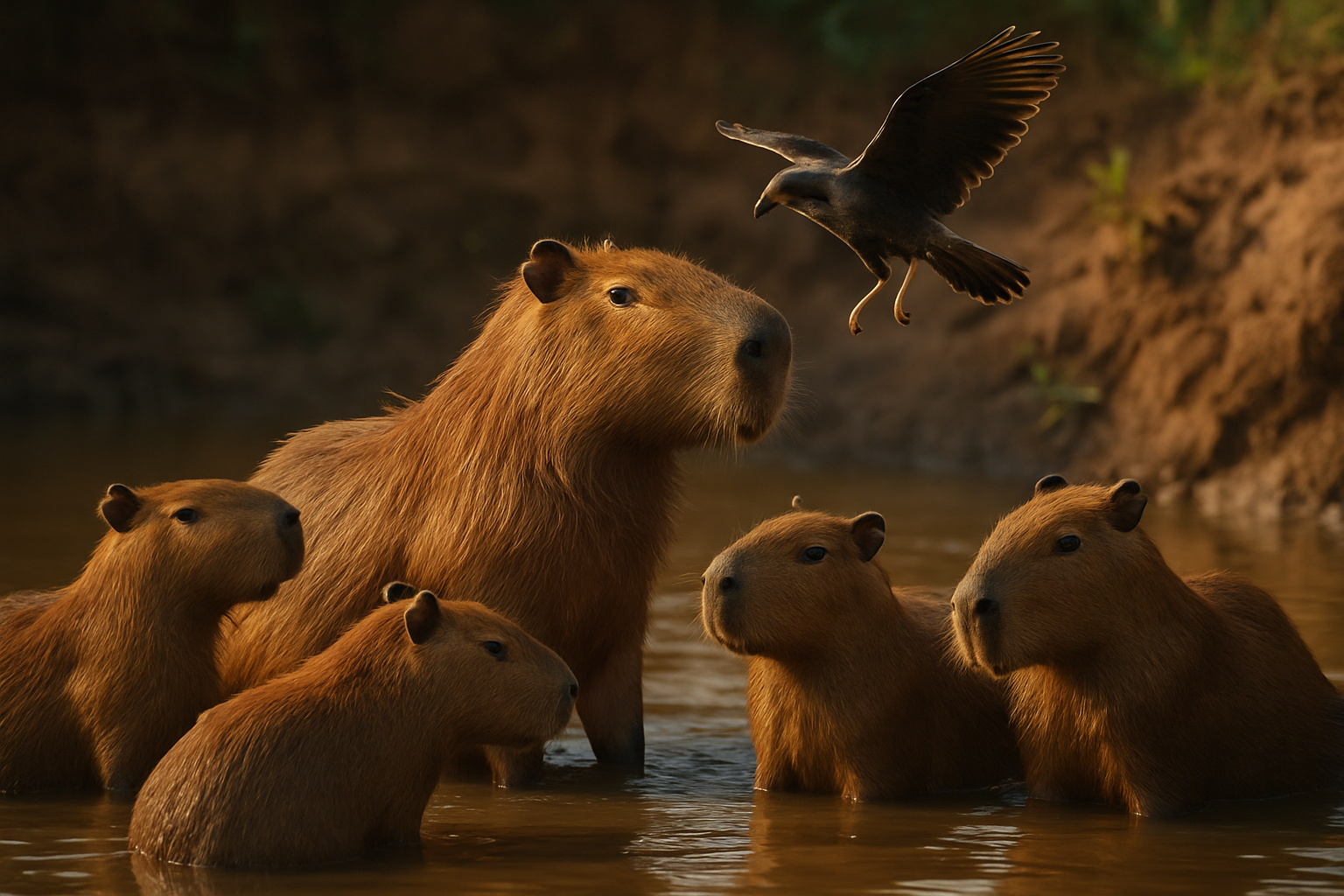The Surprising World of Capybara Social Dynamics
Imagine a giant rodent, as big as a medium-sized dog, lounging by a riverbank surrounded by its family and friends. This isn't a scene from a whimsical children's book, but a glimpse into the fascinating social life of capybaras. These charming creatures, native to South America, have captivated animal lovers worldwide with their gentle nature and unique social behaviors. In this article, we'll dive deep into the intricate social dynamics of capybaras, exploring how these oversized rodents form bonds, communicate, and thrive in their close-knit communities.

One of the most striking examples of their cooperative behavior is their approach to predator vigilance. Capybaras take turns acting as sentinels, keeping watch for potential threats while the rest of the group grazes or rests. This rotational system allows the entire herd to benefit from increased safety without sacrificing individual feeding time.
The Capybara Hierarchy
Like many social animals, capybaras have a hierarchical structure within their groups. However, their hierarchy is unique in several ways. Unlike some mammalian species where dominance is strictly based on size or aggression, capybara hierarchies are more nuanced and can be influenced by factors such as age, experience, and even social skills.
Interestingly, both males and females can occupy dominant positions within the group. The dominant male typically has priority access to mating opportunities, while the dominant female often takes the lead in decisions about group movement and feeding locations. This shared leadership model contributes to the overall stability and success of the herd.
Communication: More Than Meets the Eye
Capybaras may not be known for their vocal prowess, but they have developed a rich repertoire of communication methods. Their vocalizations range from soft clicks and whistles to alarm barks and even purr-like sounds when content. However, much of their communication is non-vocal, relying on body language and scent marking.
One of the most intriguing aspects of capybara communication is their use of scent glands. Located on their faces, these glands produce a substance that capybaras use to mark territory and communicate information about their identity, health, and reproductive status to other members of the group. This sophisticated scent-based communication system plays a crucial role in maintaining social bonds and group cohesion.
The Role of Play in Capybara Society
Play behavior is not just for young capybaras; it’s an integral part of their social life throughout their lifespan. Play serves multiple functions in capybara society, from developing motor skills and social bonds in juveniles to maintaining group cohesion and reducing tension among adults.
Capybaras engage in various forms of play, including chase games, mock fights, and even aquatic play. These activities not only provide physical exercise but also help reinforce social relationships and establish hierarchies in a non-aggressive manner. The prevalence of play behavior in adult capybaras is relatively unusual among mammals and speaks to the importance of social bonding in their society.
Interspecies Relationships: The Capybara’s Unique Place in the Ecosystem
Perhaps one of the most fascinating aspects of capybara social behavior is their willingness to form relationships with other species. In their native habitats, capybaras are often seen in close proximity to a variety of birds, which use the rodents as mobile perches and even food sources, picking insects off their fur.
This mutualistic relationship extends beyond birds. Capybaras have been observed allowing small monkeys to groom them and even tolerating the presence of caimans, their natural predators, in certain contexts. This remarkable level of interspecies tolerance sets capybaras apart and has contributed to their status as one of nature’s most sociable creatures.
The Future of Capybara Research
As our understanding of animal cognition and social behavior continues to evolve, capybaras present an exciting frontier for research. Their complex social structures, cooperative behaviors, and unique interspecies relationships offer valuable insights into the evolution of social behavior in mammals.
Current research is exploring the cognitive abilities of capybaras, including their capacity for problem-solving and social learning. Preliminary studies suggest that capybaras may possess a level of social intelligence comparable to some primate species, opening up new avenues for comparative cognition research.
The social dynamics of capybaras not only provide a fascinating subject for scientific study but also hold potential lessons for understanding human social behavior. As we continue to unravel the intricacies of capybara society, we may gain new perspectives on cooperation, conflict resolution, and the fundamental nature of social bonds.
In conclusion, the world of capybara social dynamics is a rich tapestry of cooperation, communication, and interspecies harmony. These gentle giants of the rodent world offer a compelling example of how complex social structures can evolve in unexpected places. As we face global challenges that require unprecedented levels of cooperation, perhaps we could learn a thing or two from the humble capybara about the power of social cohesion and mutual support.





